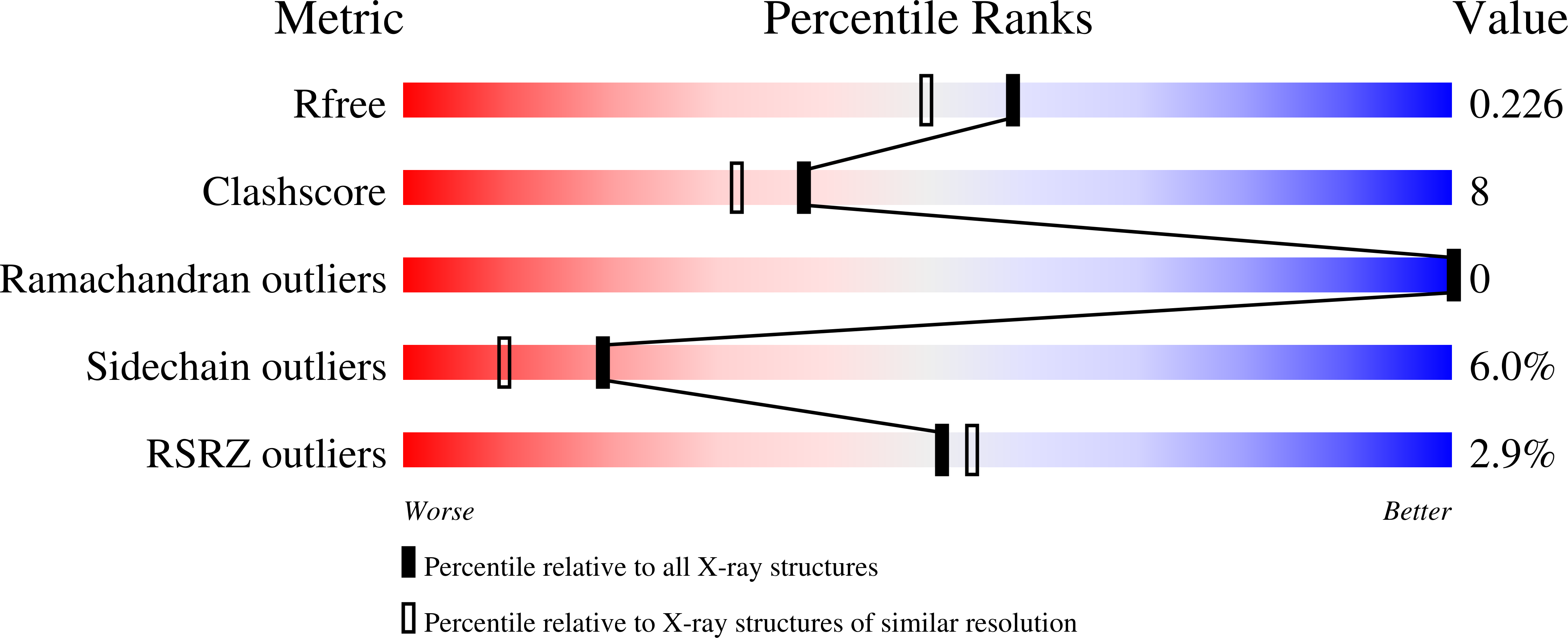Crystal structure of the oxidised and reduced acidic cytochrome c3from Desulfovibrio africanus.
Norager, S., Legrand, P., Pieulle, L., Hatchikian, C., Roth, M.(1999) J Mol Biology 290: 881-902
- PubMed: 10398589
- DOI: https://doi.org/10.1006/jmbi.1999.2917
- Primary Citation of Related Structures:
3CAO, 3CAR - PubMed Abstract:
Unique among sulphate-reducing bacteria, Desulfovibrio africanus has two periplasmic tetraheme cytochromes c3, one with an acidic isoelectric point which exhibits an unusually low reactivity towards hydrogenase, and another with a basic isoelectric point which shows the usual cytochrome c3reactivity. The crystal structure of the oxidised acidic cytochrome c3of Desulfovibrio africanus (Dva.a) was solved by the multiple anomalous diffraction (MAD) method and refined to 1.6 A resolution. Its structure clearly belongs to the same family as the other known cytochromes c3, but with weak parentage with those of the Desulfovibrio genus and slightly closer to the cytochromes c3of Desulfomicrobium norvegicum. In Dva.a, one edge of heme I is completely exposed to the solvent and surrounded by a negatively charged protein surface. Heme I thus seems to play an important role in electron exchange, in addition to heme III or heme IV which are the electron exchange ports in the other cytochromes c3. The function of Dva.a and the nature of its redox partners in the cell are thus very likely different. By alignment of the seven known 3D structures including Dva.a, it is shown that the structure which is most conserved in all cytochromes c3is the four-heme cluster itself. There is no conserved continuous protein structure which could explain the remarkable invariance of the four-heme cluster. On the contrary, the proximity of the heme edges is such that they interact directly by hydrophobic and van der Waals contacts. This direct interaction, which always involves a pyrrole CA-CB side-chain and its bound protein cysteine Sgammaatom, is probably the main origin of the four-heme cluster stability. The same kind of interaction is found in the chaining of the hemes in other multihemic redox proteins.The crystal structure of reduced Dva. a was solved at 1.9 A resolution. The comparison of the oxidised and reduced structures reveals changes in the positions of water molecules and polar residues which probably result from changes in the protonation state of amino acids and heme propionates. Water molecules are found closer to the hemes and to the iron atoms in the reduced than in the oxidised state. A global movement of a chain fragment in the vicinity of hemes III and IV is observed which result very likely from the electrostatic reorganization of the polypeptide chain induced by reduction.
Organizational Affiliation:
Laboratoire de Cristallographie et Cristallogénèse des Protéines Institut de Biologie Structurale J.P.Ebel, CEA-CNRS, rue Jules Horowitz, Grenoble, Cedex 1, 38027, France.






















